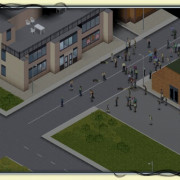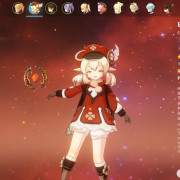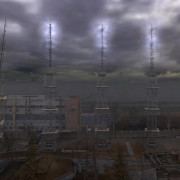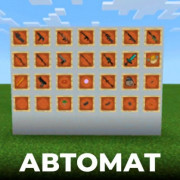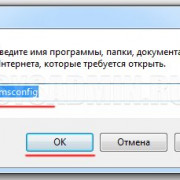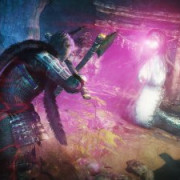Обзор industria. если бы half-life 3 была артхаусом
Содержание:
- Chapter 2: «A Red Letter Day»
- Разработка Править
- Anomalous materials (Аномальные материалы)
- Mods
- Endgame
- Сюжет Править
- Черные Оперативники (Black Ops)[править]
- Существа Зена[править]
- Chapter 2: Anomalous Materials
- Expansions
- Chapter 7: Power Up
- Chapter 4: Office Complex
- Reception
- Сюжет[править]
- Development
- Chapter 7: Highway 17
- Half-Life 2: Episode One (2006)
- Chapter 8: On A Rail
Chapter 2: «A Red Letter Day»
Alyx and Dr. Kleiner discuss Gordon’s arrival.
Gordon outside the lab during the teleporter malfunction.
Alyx, the daughter of Eli Vance, a former Black Mesa employee now leading the Resistance against the Combine, takes Gordon to Dr. Kleiner’s lab. There he is given an H.E.V. Suit and instructed to be teleported to Black Mesa East with Alyx, where he will be able to work alongside other scientists.
After teleporting Alyx, Gordon is next, but an interruption from Kleiner’s pet Headcrab, Lamarr, causes a malfunction in the teleporter, sending Gordon to Dr. Breen’s office, who recognizes him as a threat and puts Combine forces on full alert.
Following the failed teleport sequence, Gordon’s only option is to go on foot through the old Canals, with Civil Protection officers in hot pursuit. Before starting his journey, Gordon is given a Crowbar by Barney.
Trivia
A red letter day is any day of special significance. In this case, the day the chapter takes place on is the day where the teleporter, which is intended to be used as a much safer way to help citizens escape the city to Black Mesa East, is finished.
Разработка Править
Отличия от оригинальной игры Править
Вид на каньон со скалы в главе «Поверхностное натяжение» в Half-Life
Тот же вид в Half-Life: Source
Технически Half-Life: Source представляет собой усовершенствованную версию Half-Life, однако, все элементы оригинала (трёхмерные объекты, текстуры, анимация персонажей, звуковое сопровождение) были сохранены. Таким образом, Half-Life: Source скорее была разработана для поклонников игр серии, нежели для привлечения новых игроков. Согласно заявлениям представителей компании, игра является «подтверждением концепции» о том, что портирование игры на новый движок (оригинальная Half-Life построена на базе GoldSrc) возможно, но глобальное улучшение графики и перемены в игровом процессе не входили в планы разработчиков.
Но, несмотря на использование материалов из оригинальной игры, в Half-Life: Source были добавлены некоторые наработки, присущие играм на движке Source: например, реалистичная вода с отражениями и преломлением света, созданная с использованием шейдеров; динамические тени, отбрасываемые объектами и персонажами; увеличенная дальность прорисовки; появились отражающие и бликующие поверхности; реализованы эффекты от попадания пуль. Изменена физическая модель: все твёрдые предметы и персонажи управляются новым физическим движком на основе «Havok», интегрированным в Source. Живые тела ведут себя согласно системе «тряпичной куклы».
Однако, не все возможности физического движка были использованы, в силу ряда причин. Так, на одном из первых уровней оригинальной игры игроку приходится прыгать по ящикам, висящим на тросах. Это стало бы невозможным, если бы ящики подчинялись реалистичным законам физики, которые были реализованы на движке Source.
Полностью переработан интерфейс, выполненный в стилистике Half-Life 2. Появилась возможность свободно перемещаться по главам игры, таким образом, давая возможность игрокам пройти только отдельные главы вместо всей сюжетной линии.
Также в игре подверглись изменению некоторые уровни: вместо устаревшей технологии движка Half-Life, когда удалённые объекты «рисовались» на фоновой текстуре неба, используется технология «скайбокс», в результате чего имитируется реалистичное неограниченное небо, а удалённые объекты, такие как столовые горы и находящиеся на большом расстоянии постройки, стали полноценными моделями.
Искусственный интеллект Править
Некоторые аспекты искусственного интеллекта Half-Life 2 могут быть заметны и в Half-Life: Source. Противники более внимательны к присутствию игрока и ищут укрытие при ранениях. Также следует заметить, что союзники следуют за игроком на манер того, как это было в Half-Life 2. При встрече с противниками, вместо того, чтобы всегда оставаться на месте или умереть самим, союзники разобщаются, когда игрок идёт дальше. Однако, в отличие от Half-Life 2, команды управления группой союзников отсутствуют.
В некоторых случаях изменённый искусственный интеллект неблагоприятно затрагивает игровой процесс, конфликтуя с работой скриптовых сцен из оригинальной игры.
Anomalous materials (Аномальные материалы)
Итак, мы внутри. Сразу же поворачивайте вправо, дойдете к коридору, залитому голубым освещением, входите в него, когда добежите к тупику, поверните вправо. Проходите через столовую в раздевалку (интересная планировка, ничего не скажешь), а в раздевалке можно будет отыскать в комнате с левой стороны наш замечательный рабочий костюм, который сослужит еще очень полезную службу. Кажется, в нем был воплощен в жизнь ряд смелых инновационных идей, благодаря чему он не только обеспечивает хорошую защиту от разных поражающих факторов, но и может подзаряжаться в специальных терминалах, полностью восстанавливаясь от повреждений.
Чтобы примерить костюм, нажмите для начала на кнопку на пульте (по умолчанию действие «использовать» назначено на клавишу «Е»). Нажатие поднимет защитную колбу — теперь путь к модной оранжевой одежке открыт. Чтобы одеть костюм, достаточно просто подойти к нему в упор — Гордон все сделает сам. Одевшись, покидайте раздевалку тем же маршрутом, чтобы выйти в тот самый коридор с голубым освещением — теперь в нем надо свернуть в сторону лифта. Попытка пойти туда раньше закончилась бы отказом охранника нас пропускать — без костюма нельзя. А теперь страж здешнего порядка откроет двери, мы сможем войти в помещение с лифтовой шахтой.
Обойдя ее по кругу, нам нужно открыть следующую дверь, которая отпирается нажатием кнопки. Как и в случае с открытием защитной колбы костюма, за это отвечает клавиша «Е». В дальнейшем прохождении Half Life эта кнопка будет выполнять функцию действия. Теперь ничто не мешает вам спуститься этажом ниже, где по линейному пути через коридоры доберетесь в комнату управления — она является соседней по отношению к помещению, где находится реактор. Нам нужно пообщаться с учеными (все та же универсальная клавиша «Е»), после чего один из светил науки откроет дверь.
Через дверь мы выйдем в коридор, который приведет прямо к шлюзу, примыкающему к помещению с реактором. У здешнего персонала не все в порядке — имеются какие-то только им известные поломки, но намерены провести эксперимент, несмотря на это. Говорите еще и с ними, после чего вам откроют двери непосредственно в помещение с реактором. Приступаем к работе — для начала надо дождаться, пока кто-то из ученых испытает связь и откроет колбу, прикрывающую кнопку запуска реактора. Кнопка находится на балконе сверху, туда можно попасть при помощи лестницы.
Нажав на кнопку, продолжайте прохождение Half Life, спускаясь назад, внизу надо отыскать ящик из металла в решетку, который подсвечивается четырьмя габаритными огнями красного цвета — специально, чтобы быстрее можно было заметить, помещение-то круглое, недолго потеряться в пространстве. Теперь нужно немного подождать — механизмы сверху раскручиваются, когда вращения достигнут пика, мы должны затолкать тележку с закрепленным на ней кристаллом прямо к сверкающим разрядам, через прорез внизу реактора. Это было не самое разумное действие при наличии поломки в аппаратуре.
Mods
After its release in 1998, Half-Life saw fervent support from independent game developers, due in no small part to support and encouragement from Valve Software. Worldcraft, the level-design tool used during the game’s development, was included with the game software. Printed materials accompanying the game indicated Worldcraft’s eventual release as a retail product, but these plans never materialized. Valve also released a software development kit, enabling developers to modify the game and create mods. Both tools were significantly updated with the release of the version 1.1.0.0 patch. Many supporting tools (including texture editors, model editors, and rival level editors like the multiple engine editor QuArK) were either created or updated to work with Half-Life.
Half-Life’s code has been released and is being used as a base for many multiplayer mods such as the immensely popular Counter-Strike. Other popular multiplayer mods include Team Fortress Classic, Day of Defeat, Deathmatch Classic, Action Half-Life, Firearms, and Natural Selection. Team Fortress Classic and Deathmatch Classic were both developed in-house at Valve Software. Some mods, such as Counter-Strike and Day of Defeat, that began life as the work of independent developers (self-termed «modders»), later on received aid from Valve. There was even a free team-based multiplayer mod called Underworld Bloodline created to promote the Sony Pictures film Underworld.
Numerous single-player mods have also been created, such as USS Darkstar (1999, a futuristic action-adventure on board a zoological research spaceship), The Xeno Project 1 and 2 (1999–2005, a two-part mod starting in Xen and again including spaceships), Edge of Darkness (2000, which features some unused Half-Life models), Half-Life: Absolute Redemption (2000, which brings back Gordon Freeman for four additional episodes and another encounter with the G-Man), They Hunger (2000–2001, a survival horror total conversion trilogy involving zombies), Poke 646 (2002, a follow-up to the original Half-Life story with improved graphics), and Xen-Warrior (2002–2004, based on Half-Life: Chronicles, the player controls an Alien Grunt, similar to Point of View in which players take on the role of a Vortigaunt and Half Life: Zombie Edition, where the player plays as a Headcrab).
Some Half-Life modifications eventually landed on retail shelves. Counter-Strike was the most successful, unexpectedly becoming the biggest selling online game to date and having been released in five different editions: as a standalone product (2000), as part of the Platinum Collection (2000), Counter-Strike: Condition Zero (2004), and the newest addition, Counter-Strike: Source, which runs on Half-Life 2′s Source engine. Team Fortress Classic has had a visual upgrade to the Source engine, becoming the stylized Team Fortress 2. Day of Defeat also received the Source treatment becoming Day of Defeat: Source. Gunman Chronicles (2000), a futuristic Western movie-style total conversion with emphasis on its single-player mode) was also released as a stand-alone product.
Endgame
- «Time to choose.«
- ―The G-Man
When Gordon comes to his senses, he finds himself in front of the G-Man. Both are transported to various locales around Xen, while the G-Man praises Gordon’s actions in the border world, to later explain that his «employers» have agreed that Gordon has «limitless potential,» and have authorized him to offer Freeman a job.
The G-Man and Gordon are teleported a last time to a tram car, flying through space at immense speed. By stepping into a portal, and knowing that his only other choice is a battle he has no chance of winning, Gordon accepts the G-Man’s offer.
Finding himself floating in nothingness, he hears the G-Man’s voice one last time; «Wisely done, Mr. Freeman, I will see you up ahead…»
The G-Man talking to Gordon Freeman on Xen, with Boids in the back.
Сюжет Править
Сюжет игры полностью соответствует сюжету оригинальной Half-Life и повествует о происшествии в исследовательском центре «Чёрная Меза», расположенном в американском штате Нью-Мексико.
Действующий персонаж игры — молодой талантливый научный сотрудник Гордон Фримен, работающий в Лаборатории аномальных материалов. Обладая низким уровнем допуска, учёный не подозревает о том, какие опасности таит в себе предстоящая работа. Однажды утром Гордона направляют в тестовую камеру для проведения стандартного анализа кристалла. Последствия эксперимента, однако, оказываются катастрофическими.
Черные Оперативники (Black Ops)[править]
Карательные войска, непонятно кому подчиняющиеся, но очевидно — неуказанной спецслужбе США. В оригинальной игре их роль лишь эпизодическая: они бегло встречаются в небольшом количестве и их цели совершенно не ясны. Игроками предполагалось, что это элитный отряд, работающий вместе с HECU (они никогда не встречались вместе, но технически были настроены как союзники). С выходом же дополнение «Opposing Force», где главным героем стал боец HECU, их роль была расширена. И выяснилось: миссия черных оперативником — пробиться в сердце Black Mesa и уничтожить комплекс с помощью чемоданного ядерного устройства, подложенного там и истребляя по ходу всё живое. Да, в том числе солдат. Среди них есть солдаты (в черной форме и масках) и ассассины (девушки в обтягивающих костюмах, очень прыгучие). Гордон Фримен успевает встретиться только с парочкой женщин-ассассинов; с остальными приходится разбираться уже Шепарду.
Существа Зена[править]
Первыми на Землю прибывают различные неразумные существа — обитатели Зена.
- Хедкраб. Один из самых знаменитых монстров видеоигр. Представляет собой паразита-кукловода, проклевывающего череп и захватывающего контроль над мозгом, после чего человек превращается в зомби. Сам по себе — небольшое существо, похожее на помесь краба и жабы, визжит как кошка, которой наступили на хвост, прыгает и бьёт/царапает Гордона по голове (прогрызание черепа и зомбирование явно сделало бы игру слишком хардкорной). Единицы способны дожить до того чтобы вырасти и стать гонарчем, огромным и опасным существом способным производить маленьких хедкрабов.
- Барнакл. Неподвижный хищник-капканщик, присасывается к потолку и висит, свесив длинный язык. Всё, что прикасается к языку, — хватает и тянет себе в рот. Если убить эту тварь — из неё посыпятся человеческие кости (намекается, что это кости тех, кого барнакл сьел и переварил).
- Хаундай (собачка-глазик). Небольшое животное из Зена, похожее на земную собаку, но трехногое и с большим фасетчатым глазом (или множеством маленьких глаз, что по сути то же самое) на месте головы. Атакует сильными звуковыми волнами. Поодиночке они угрозы не представляют, но атакуют обычно стаями.
- Буллсквид (быкокальмар). Крупный хищник, внешне скорее похож на помесь крокодила с кальмаром. Плюётся едким соком, кусается.
- Тентакль (щупальце). Тварь, похожая на гигантское зелёное щупальце с когтем. Практически неузявима, но слепая, и поэтому её можно отвлечь гранатой.
- Ихтиозавр. Живущее в воде существо, похожее на рыбу с зачатками амфибии. Встреча с ним в родной стихии очень опасна.
Chapter 2: Anomalous Materials
- «They’re waiting for you Gordon… in the Test Chamber.«
- ―A scientist reminds Gordon of his duty
Arriving at the , Gordon is informed of several messages for him that were lost due to a system crash, and is told to get into his HEV Suit and head down to the lab, where he finds himself face to face with the people conducting his test; they inform him that they have a unique and large sample of a classified origin and that they will be deviating from normal procedure to accommodate for this.
Once in the test chamber, he goes to the control panel and presses the button to start the rotors on the Anti-Mass Spectrometer. Rising up from the delivery system, the sample arrives and Gordon proceeds to push the cart into the Spectrometer’s beam, upon contact with the sample a Resonance Cascade event occurs, causing Alien organisms to teleport to the surrounding Facilities and sending him to a strange alien world where he passes out.
The HEV Suit room.
The Anti-Mass Spectrometer.
The Resonance Cascade sparks the Black Mesa Incident.
Gordon is briefly teleported to Xen.
Expansions
Two expansion packs made by the developer Gearbox Software have been released for the PC version: Half-Life: Opposing Force (1999) and Half-Life: Blue Shift (2001). Opposing Force returns the player to Black Mesa during the events of Half-Life’s storyline, but this time from the perspective of the U.S. Marines sent to cover up the incident. It introduced several new weapons (most notably the M249 SAW LMG and a ), new non-player characters, both friendly and hostile (Otis Laurey the security guard and the Race X aliens, respectively) and new, previously unseen areas of the facility. The expansion is much shorter than Half-Life, having Twelve chapters to the original’s nineteen. Half-Life: Opposing Force (unlike most expansion packs for video games) received critical acclaim, and an overwhelmingly positive response from fans.
Blue Shift returns the player to Half-Life’s storyline once more, this time as one of the facility’s security guards. Originally developed as a bonus mission for the canceled Dreamcast version, Blue Shift came with an optional High Definition Pack that could update the look of Half-Life, Opposing Force, and the new Blue Shift content. In particular, the models’ polygon count and texture resolutions were increased, and some changes were made to the in-game sounds, most notably the Shotgun. Blue Shift had relatively little new content compared to Opposing Force: aside from a few models (jacket-less scientists and security guards, Otis, and Dr. Rosenberg), all content was already present in the original Half-Life. While the critical reception was mixed, the reception has very much warmed to the game in recent years, praised for its atmosphere and details.
Decay was another expansion by Gearbox, released only as an extra with the PlayStation 2 version of Half-Life. The add-on featured co-operative gameplay in which two players could solve puzzles and fight alongside against the many foes in Black Mesa. An Unofficial PC ported of this expansion was released on September 22, 2008 by Ukrainian Developer as a Modification. The critical reception was mostly very positive, praise went towards its effective portrayal in a co-op game.
In 2000, a pack titled the Half-Life: Platinum Collection was released, with these games included:
- Half-Life
- Counter-Strike
- Team Fortress Classic
- Half-Life: Opposing Force
In 2002, the pack was re-released with Half-Life: Blue Shift included.
Today it is known on Steam as the Half-Life 1 Anthology without Counter-Strike.
The Game of the Year edition of Half-Life came packaged with Team Fortress Classic.
Chapter 7: Power Up
Trying to reach the surface once more, Gordon’s progress is thwarted by a Gargantua in the Sector E Materials Transport. He then learns from a dying security guard that if he restores the generator, he can ride the tram to the surface.
Freeman enters the Houndeye infested subterranean areas and activates the generator, restoring power to sector E; after activating more switches, he destroys the Gargantua patrolling the area by turning on the transformers supplying the rail system with power. It is also possible to kill the Gargantua using an excessive amount of explosives.
Jumping onto a tram, he is able to continue his way by smashing through the concrete barricade blocking the access to the rail system.
Two HECU soldiers fighting the Gargantua.
Chapter 4: Office Complex
- «Hey! What the hell are you doing down here? Get topside! I heard there are troops coming in to save us.«
- ―A security guard
Gordon reaches the administration center at Sector D, where several Scientists and Security Guards are barricaded into the office complex, hiding from the alien creatures. Avoiding the facility’s Ceiling Turrets and the invading Vortigaunts he hears from the personnel that the military have arrived to rescue the people trapped but that he should still head for the surface.
The SPAS-12.
Two Headcrabs approach Gordon.
A dead scientist in his office.
The large walk-in freezer in Sector D.
Reception
PlayStation 2 cover.
Sega Dreamcast Cover
The game had its first major public appearance at the 1997 Electronic Entertainment Expo, where it was widely acclaimed.
On its release, critics hailed its overall presentation and numerous scripted sequences, and it won over 50 PC Game of the Year awards. Its gameplay influenced first-person shooters for years to come, and it has since been regarded as one of the greatest games of all time. As of November 2008, Half-Life has sold 9.3 million copies. As of July 14, 2006, the Half-Life franchise has sold over 20 million units. According to GameSpy, Half-Life is the most played online PC game (excluding MMORPGs), ahead of Half-Life 2. In celebration of the game’s 10th anniversary, Valve lowered the price of Half-Life from $9.99 USD to $0.98 on November 8, 2008 for three days.
Сюжет[править]
Действие первой игры происходит в научно-исследовательском центре Black Mesa (букв. «Черная Столовая Гора»), представляющем собой нечто среднее между закрытым подземным городом и огромной лабораторией. Именно там ведутся эксперименты по телепортации и путешествиям в иные измерения, в которых собирался участвовать Гордон Фримен. Опыт, в котором он участвует, заключается в исследовании некоего кристалла с неизвестными свойствами; этот опыт выходит из-под контроля, и по всему комплексу открываются порталы в измерение Зен.
Фримен пытается выбраться на поверхность, сражаясь по ходу с существами из Зена и вторгшимися солдатами расы Зена — рабами-вортигонтами, и вскоре узнает, что ученые связались по радио с военными, и помощь близка. Но надежда оказывается иллюзией: войска прибывают с целью закрыть порталы силой и уничтожить всех свидетелей, в том числе и самого Фримена. Оказавшись между двух огней, Гордон пробирается в последнюю уцелевшую лабораторию Black Mesa — лабораторию Лямбда, откуда сам отправляется в Зен, чтобы остановить угрозу.
Development
Early promotional poster, with a Lambda logo in a baby’s eye.
Half-Life was the first product for Kirkland, Washington-based developer Valve Software, which was founded in 1996 by former Microsoft employees Mike Harrington and Gabe Newell. They settled on a concept for a horror-themed 3D action game, and licensed the Quake engine from id Software. Valve eventually modified the engine a great deal, notably adding skeletal animation and Direct3D support; a developer later stated that seventy percent of the engine code was rewritten. At first Valve had difficulties finding a publisher, many believing their project «too ambitious» for a studio headed by newcomers to the video game industry. However, Sierra On-Line had been very interested in making a 3D action game, especially one based on the Quake engine, and so signed them for a one-game deal.
The original code name for Half-Life was Quiver, after the Arrowhead military base from Stephen King’s novella The Mist, which served as an early inspiration for the game. Gabe Newell explained in an interview that the name Half-Life was chosen because it was evocative of the theme, not clichéd, and had a corresponding visual symbol: the Greek letter lambda, which represents the decay constant in the half-life equation.
The first public appearances of Half-Life came in early 1997; it was a hit at the Electronic Entertainment Expo that year, where they primarily demonstrated the animation system and artificial intelligence. Valve Software hired science fiction author Marc Laidlaw in August 1997 to work on the game’s characters, story, and level design. Half-Life was originally planned to be shipped in December 1997, to compete with Quake II, but was postponed when Valve decided the game needed significant revision.
In a 2003 «Making of…» feature in Edge, Newell discussed the team’s early difficulties with level design. In desperation, a single level was assembled including every weapon, enemy, scripted event and level design quirk that the designers had come up with so far. This single level inspired the studio to press on with the game. As a result, the studio completely reworked the game’s artificial intelligence and levels in the year leading up to its release. At E3 1998 it was given Game Critics Awards for «Best PC Game» and «Best Action Game» at the expo. The release date was delayed several times in 1998 before the game was finally released in November of that year.
Chapter 7: Highway 17
Broken bridge and car wrecks on Highway 17 near Dock 137.
Freeman is informed that Eli Vance has been taken to Nova Prospekt and sets out on a journey along Highway 17 located in The Coast to rescue him. Gordon encounters Combine Soldiers for the first time as well as a new type of Xen alien, the Antlions that made enormous colonies in the beach areas. Colonel Odessa Cubbage is also met in this level, giving Gordon the RPG. As Gordon navigates through the Highway 17, he sees abandoned outposts taken over by Combine before arriving to the Bridge Point. Gordon deactivates Force Fields in order to progress across a train bridge.
Half-Life 2: Episode One (2006)
История Half-Life 2 осталась явно незаконченной, и сюжет самостоятельного дополнения Half-Life 2: Episode One, вышедшего в 2006 году, стал ее прямым продолжением.
Действие Episode One происходит в Сити 17, откуда Фримен и его постоянная спутница Аликс должны выбраться до того, как взорвется Цитадель Альянса.
В Episode One используется более совершенная версия Source, чем во второй части, что позволило реализовать в ней более качественную графику и различные новые эффекты. Рядом с игроком постоянно находится Аликс, и геймплей вынуждает игрока постоянно взаимодействовать с ней самым разным образом.
Chapter 8: On A Rail
As Gordon rides the tram into the Materials Transport section of Black Mesa, he learns from a security guard that he must ride to the High Altitude Launch Center to launch a satellite, which the Lambda Team can use to reverse the effects of the Resonance Cascade.
Freeman also discovers the HECU’s true hatred for him, as well as their larger reinforcements: sandbag bunkers with rapid-fire sniper rifles, mounted machine gun turrets (manual and automated), and even mounted rocket launchers.
After going round in circles for a while, Gordon goes up several elevators and at last reaches the surface again near the launch site; he sends the rocket up into orbit and goes back underground.
The rocket pit.
